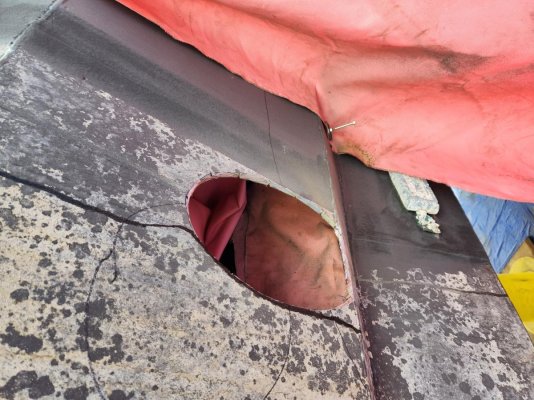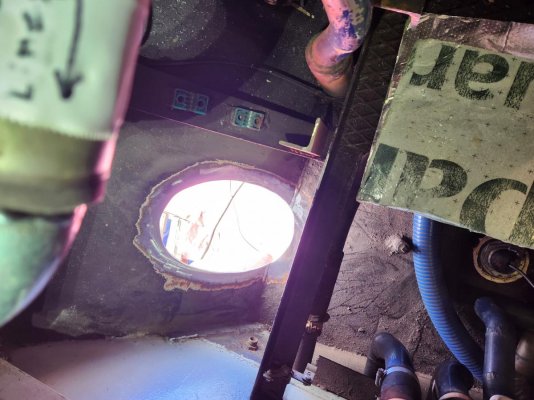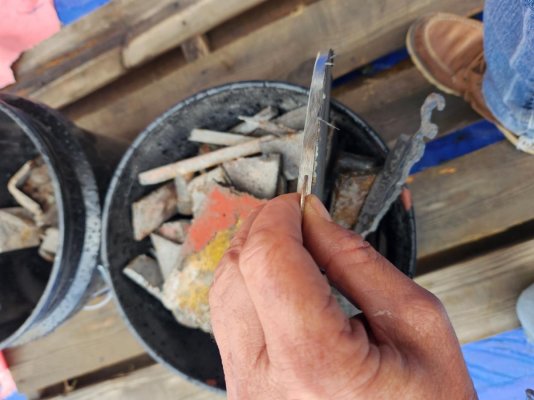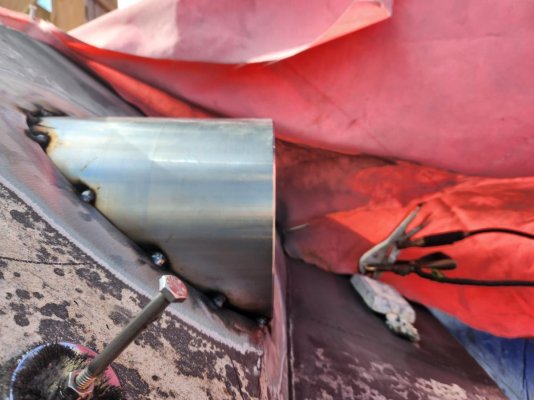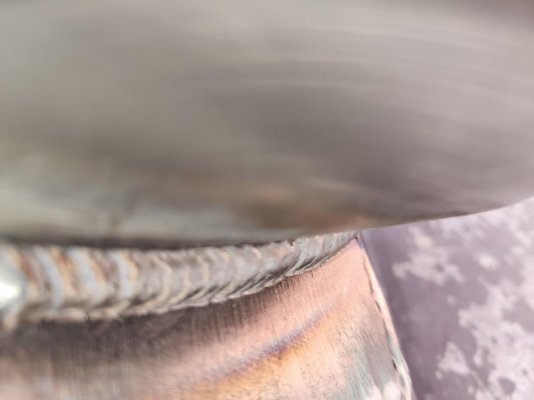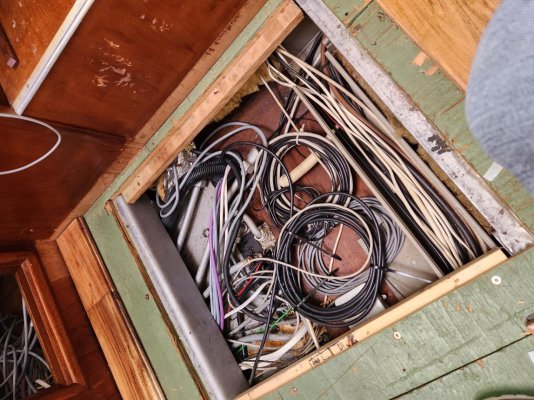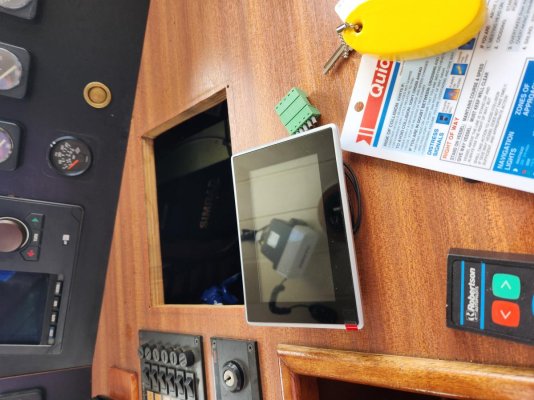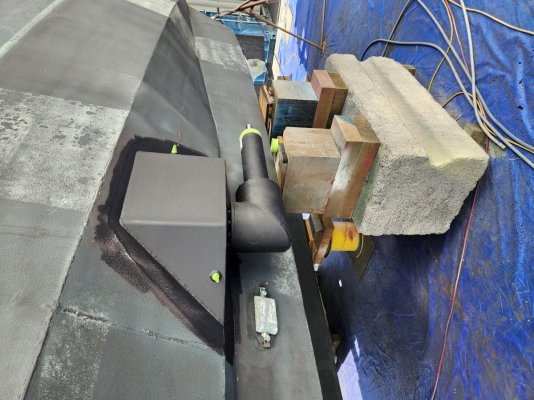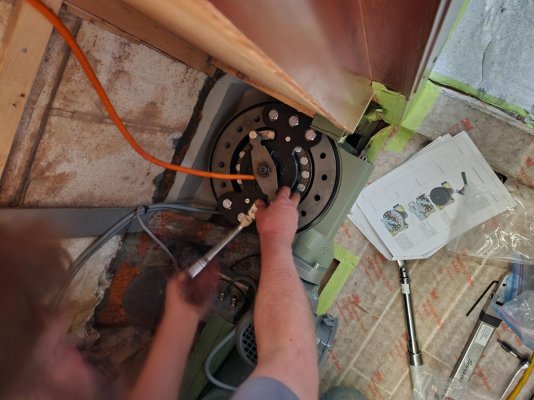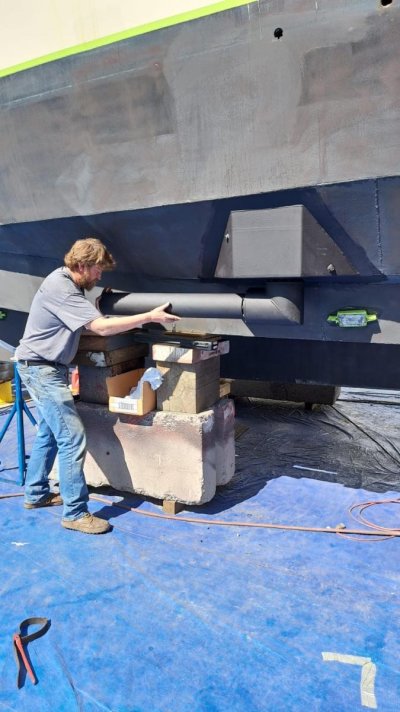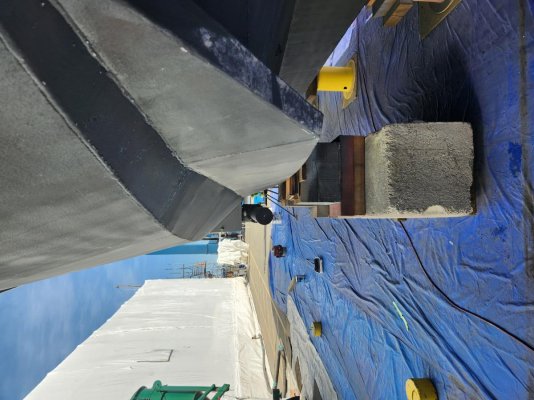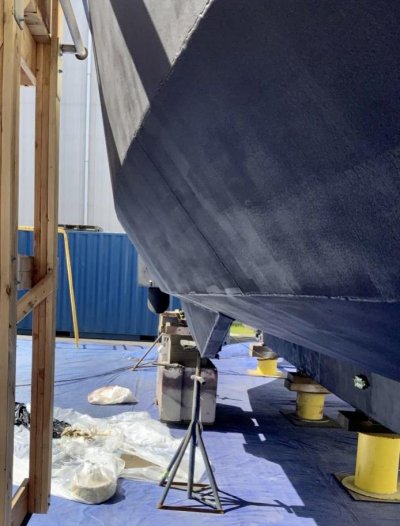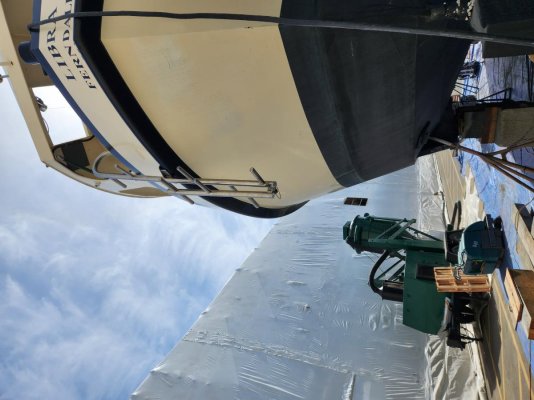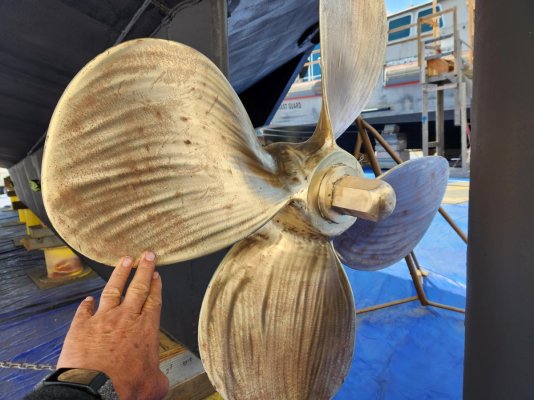klee wyck
Guru
- Joined
- Feb 8, 2014
- Messages
- 987
- Location
- USA
- Vessel Name
- Domino and Libra
- Vessel Make
- Malcom Tennant 20M and Noordzee Kotter 52
No photos yet but I am just back from two days in the yard on this project.
We spent the time working on placement and workplan for the stabilizer bushing installs and on a number of other projects that I am having the yard do.
This was my first look at the equipment that was shipped from Holland and my first real experience with this shipyard.
For now, I will just say that I am quite impressed with both, and I have not previously ever made a comment like that in regard to a shipyard experience.
Fingers crossed that this ends as happily as it has started.
DMS will send an engineer from Holland once the bushing and foundation are complete, and the cable is run. I spoke with her several times during this visit and believe that is also an excellent resource. Final connection, commissioning, and sea trial is projected to be the week of May 2.
This is quite exciting for me.
For the locals following this thread, the plan is to have DMS demo this install/my boat at the Anacortes show in May.
Next update late next week.
We spent the time working on placement and workplan for the stabilizer bushing installs and on a number of other projects that I am having the yard do.
This was my first look at the equipment that was shipped from Holland and my first real experience with this shipyard.
For now, I will just say that I am quite impressed with both, and I have not previously ever made a comment like that in regard to a shipyard experience.
Fingers crossed that this ends as happily as it has started.
DMS will send an engineer from Holland once the bushing and foundation are complete, and the cable is run. I spoke with her several times during this visit and believe that is also an excellent resource. Final connection, commissioning, and sea trial is projected to be the week of May 2.
This is quite exciting for me.
For the locals following this thread, the plan is to have DMS demo this install/my boat at the Anacortes show in May.
Next update late next week.

